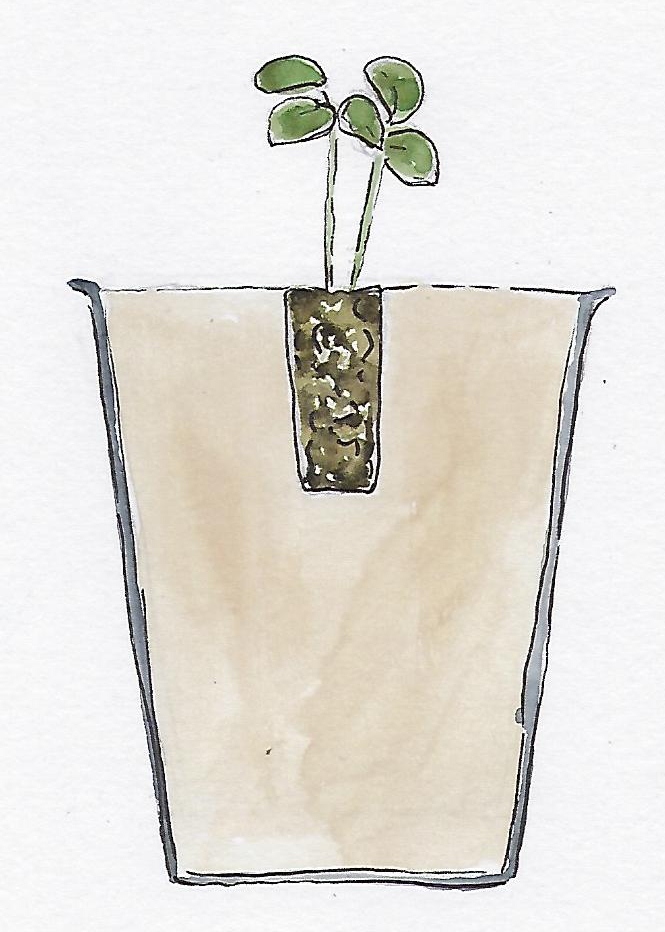Planting your Harvington Hellebores® Plug Plants
How to plant
Please allow some light and air into your plants immediately and keep them in a cool light place. Ensure that the plug plants are kept moist at all times and plant them as soon as possible after receiving them.

Plant each plug in a 1 or 2 litre sized deep pot or container for this growing season so that they establish well before planting them out. Position the plug so that the bottom of the stem is at the top of the pot (see illustration for details). Keep them in cool semi-shade – don’t put them in a greenhouse or conservatory.
Once they have rooted down into the pots they will be ready to plant into the garden in the autumn or spring. Prepare the soil well: dig over an area, add some compost or well-rotted manure and then plant them. Take care not to damage the roots and gently firm the soil around the plant. Keep the area around them weed free.
Always water your plants in when you plant them either in a pot or in the garden. Remember hellebores are hardy plants and so they should be kept outside.
Where to plant
Hellebores thrive in dappled shade in soil that is well cultivated, fertile and always moist during the main growing period.
Compost and feed
Hellebores are hungry plants. Use a general purpose, free draining compost or well-rotted manure when planting. The main growing periods are during the Spring and Autumn so use a liquid feed every 2 – 3 weeks during April and May, and again in September. As Autumn approaches, top dressing them around the root zone with some bone meal is advisable but avoid putting this near the crown of the plant. A general-purpose fertilizer can then be applied in late winter.
Leaves
Hellebore leaves are ‘evergreen’ but do eventually look past their best, usually in late Winter. They can then be cut off and new growth will take place. It is important to keep the crown of the plant open by cutting back any dead foliage and avoiding any build-up of soil or leaf litter. We do advise however leaving the leaves on as long as they look green and healthy.
Occasional problems
Black Spot: Hellebores sometime suffer from fungal disease which causes black patches on their leaves. The easiest way to prevent this or treat if already present is to spray with a fungicide like Liquid Copper or something like Roseclear at the same time as you treat your roses.
Aphids: Sometimes aphids enjoy feeding on Hellebores. Use an appropriate control spray from your local garden centre or hardware store to prevent an infestation.
Please note: Hellebores can cause skin irritation and are harmful if eaten
For information on planting your Harvington Hellebores® pot plants click here.

